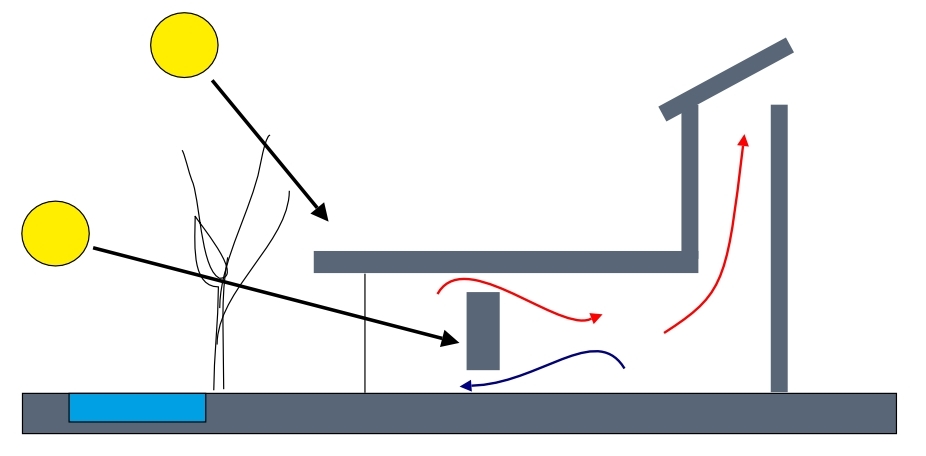Solar shading
Solar radiation can be useful in providing natural light and heat for buildings, reducing the need for artificial lighting or heating. This can reduce energy use and so emissions. However, excessive solar radiation can result in overheating, which may need to be countered with energy-intensive cooling, or can cause glare, a form of visual discomfort experienced when lighting is excessively bright.
Part L of the UK building regulations places restrictions on the amount of glazing that can be used in buildings.
Solar shading, is a form of solar control that can be used to optimise the amount of solar heat gain and visible light that is admitted into a building. This can have a significant impact on the energy use of a building as well as on the thermal and visual comfort of occupants, protecting against overheating and glare on hot or sunny days. It can also provide privacy.
Solar shading can be fixed or moveable (dynamic).
Fixed solar shading can be provided by:
- Canopies.
- Overhanging eaves or balconies.
- Trees and other vegetation.
- External louvres or brise soleil.
- Light shelves.
- Canopies and awnings.
- Solar control glazing.
Dynamic solar shading can be provided by:
- Internal blinds.
- Curtains.
- Internal or external shutters.
- External roller blinds.
- Other adjustable shading devices that respond to conditions.
Under cloudy conditions, moveable shading can be retracted to allow daylight and useful solar gain to enter the buildings, reducing dependence on electric lighting and heating.
However, The way these systems are controlled can have a significant impact on building energy efficiency and on occupant comfort and wellbeing. Incorrect operation can lead to overheating and glare, or can result in a building being shaded when it does not need to be.
Dynamic solar shading can be operated manually by chords, chains and crank handles, or it can be motorised, either hard wired, battery operated or solar powered. This can make control easier and safer and can allow automation, either by timer or in response to actual conditions.
[edit] Related articles on Designing Buildings Wiki
- Angular selective shading systems.
- Automated blinds.
- Blinds.
- BREEAM Visual comfort Glare control.
- Brise soleil.
- Control of solar shading IP 4 17.
- Daylight lighting systems.
- Exterior shutters.
- Glare.
- Louvre (or louver).
- Retrofitting solar shading.
- Solar gain.
- Solar shading of buildings BR 364.
- Solar thermal panels.
- The daylight factor.
- Thermal comfort.
- Urban heat island effect.
- When hospital buildings aren’t healthy.
- Wind Resistance for External Blinds.
Featured articles and news
Infrastructure that connect the physical and digital domains.
Harnessing robotics and AI in challenging environments
The key to nuclear decommissioning and fusion engineering.
BSRIA announces Lisa Ashworth as new CEO
Tasked with furthering BSRIA’s impressive growth ambitions.
Public buildings get half a million energy efficiency boost
£557 million to switch to cleaner heating and save on energy.
CIOB launches pre-election manifesto
Outlining potential future policies for the next government.
Grenfell Tower Inquiry announcement
Phase 2 hearings come to a close and the final report due in September.
Progress from Parts L, F and O: A whitepaper, one year on.
A replicated study to understand the opinion of practitioners.
ECA announces new president 2024
Electrical engineer and business leader Stuart Smith.
A distinct type of countryside that should be celebrated.
Should Part O be extended to existing buildings?
EAC brands heatwave adaptation a missed opportunity.
Definition of Statutory in workplace and facilities management
Established by IWFM, BESA, CIBSE and BSRIA.
Tackling the transition from traditional heating systems
59% lack the necessary information and confidence to switch.
The general election and the construction industry
As PM, Rishi Sunak announces July 4 date for an election.
Eco apprenticeships continue help grow green workforce
A year after being recognised at the King's coronation.
Permitted development rights for agricultural buildings
The changes coming into effect as of May 21, 2024.






















